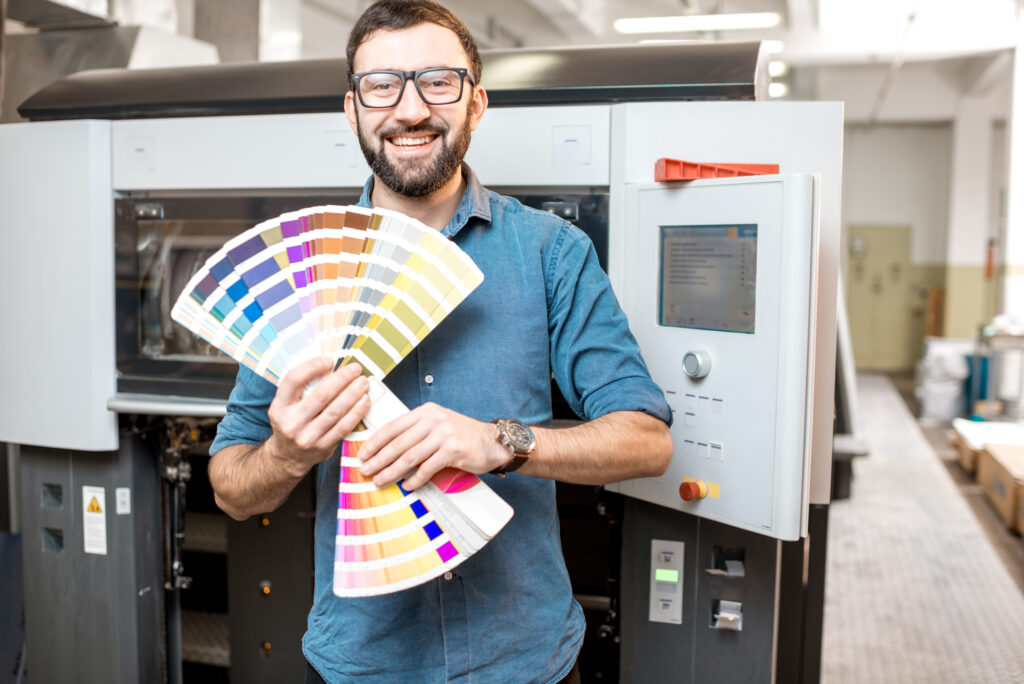The Psychology Of Color In Graphic Design: How To Use It Effectively

Color psychology plays a vital role in creating effective graphic designs. Understanding how colors impact human emotion and behavior can greatly enhance the visual appeal and effectiveness of marketing messages. The color wheel, a fundamental tool in graphic design, helps in creating engaging color schemes by utilizing various color variants such as hue, shade, tone, and tint. Each of these variants evokes different emotional responses and can be strategically used to convey specific messages. Marketers can leverage the power of color to create a sense of urgency, evoke desired emotions, and influence customer preferences. By harnessing the impact of color in design, graphic designers can create impactful visuals that resonate with the target audience and enhance the overall user experience.
Definition of Color Psychology
Color psychology is a fascinating field that explores the impact of different colors on human emotions, thoughts, and behaviors. In the context of graphic design, understanding how color can influence our perception and response to visuals is crucial for creating effective designs. Color psychology delves into the meaning and symbolism behind individual colors, as well as how they interact and combine to create different emotional responses in viewers. It encompasses the concepts of color theory, color harmonies, and the effects of color on user experience.
By harnessing the power of color psychology, graphic designers can employ various techniques to evoke specific emotions, enhance the visual appeal of their designs, and effectively communicate their marketing message to target audiences.
The Impact of Color on Human Emotion
The impact of color on human emotion is an important aspect to consider in graphic design. Colors can evoke specific emotions and create psychological associations in people’s minds. Understanding the psychology behind different colors can help designers effectively communicate and evoke the desired emotional responses in their audience.
For example, warm colors like red, orange, and yellow are often associated with energy, passion, and enthusiasm. These colors can create a sense of urgency and draw attention to important elements in a design. Cool colors such as blue, green, and purple, on the other hand, evoke feelings of calmness, tranquility, and relaxation. These colors can be used to create a sense of balance and serenity in a design.
In addition, individual colors within the color spectrum can evoke specific emotions. For instance, red can trigger feelings of excitement and urgency, while blue can evoke a sense of trust and security. Green is often associated with nature and growth, and can create a feeling of freshness and harmony. By strategically using these colors in graphic design, designers can guide the emotional responses of their audience and effectively convey their intended message.
Understanding the impact of color psychology allows designers to create impactful designs that resonate with their target audience and effectively convey the desired emotional response. By utilizing the appropriate colors and color combinations, designers can enhance the user experience and create visually appealing designs that leave a lasting impression.
Primary Colors and their Significance in Graphic Design
Primary colors play a fundamental role in graphic design and serve as the building blocks for all other colors. In color theory, primary colors are considered the base colors that cannot be created by mixing other colors. The three primary colors in graphic design are red, blue, and yellow.
Each primary color has its own characteristics and evokes different emotional responses. Red is a vibrant and energetic color associated with power, passion, and excitement. It grabs attention and can create a sense of urgency in a design. Blue, on the other hand, is calm and serene, evoking feelings of trust, security, and stability. It is often used to create a sense of reliability. Yellow is bright and eye-catching, symbolizing happiness, optimism, and energy. It can convey a sense of warmth and positivity in a design.
Primary colors also play a significant role in creating color combinations and harmonies. By combining primary colors with secondary and tertiary colors, designers can create a range of color palettes and harmonies that convey different moods and messages. Understanding the emotional responses and characteristics of primary colors allows graphic designers to create impactful designs that effectively communicate their intended message.
Secondary Colors and their Role in Graphic Design
Secondary colors play a crucial role in graphic design as they offer a wide range of opportunities for creating visually appealing and effective designs. These colors are created by mixing two primary colors together. By combining primary colors in different proportions, graphic designers can achieve a variety of secondary colors that add depth and vibrancy to their work.
For example, mixing red and blue creates purple, red and yellow create orange, and blue and yellow produce green. These popular secondary color combinations offer a harmonious blend that can enhance the overall visual impact of a design.
Each secondary color evokes a unique emotional response. Purple, for instance, represents creativity, luxury, and spirituality. Orange is often associated with enthusiasm, warmth, and energy. Green symbolizes growth, nature, and harmony. Understanding the impact of these secondary colors allows designers to strategically incorporate them into their projects to elicit specific emotional responses from their audience.
When strategically used, secondary color combinations can bring a design to life, attract attention, and convey the intended message. By leveraging the harmonious and visually striking nature of secondary colors, graphic designers can create visually appealing and effective designs that leave a lasting impression.
Tertiary Colors in Graphic Design Projects
Tertiary colors play a crucial role in graphic design projects by adding depth and complexity to the overall color scheme. These colors are created by mixing primary colors (red, blue, and yellow) with secondary colors (purple, orange, and green).
By combining these colors, designers can achieve unique and visually appealing color palettes that stand out. Tertiary colors offer a wide range of possibilities, allowing designers to create gradients, shadows, and highlights that add dimension to their designs.
Designers can strategically use tertiary colors to achieve specific visual effects. For example, by incorporating warm tertiary colors like red-orange or yellow-green, they can create a vibrant and energetic feel. On the other hand, using cool tertiary colors such as blue-green or purple-blue can evoke a calming and soothing effect.
The versatility of tertiary colors allows designers to experiment and create innovative designs. Whether it is a professional logo or an eye-catching advertisement, using tertiary colors in graphic design can elevate the overall aesthetic appeal and make a design stand out among others.
The Color Wheel: Understanding Its Functionality in Graphic Design
The color wheel is a fundamental tool in graphic design that aids in the development of effective color harmonies and interactions. It is composed of primary, secondary, and tertiary colors, offering a wide range of options for designers to create visually appealing designs.
Primary colors, namely red, blue, and yellow, are the building blocks of all other colors. These colors cannot be created by mixing other colors together but can be combined to form secondary colors. By mixing two primary colors, such as blue and yellow, green is formed. Similarly, red and blue combine to create purple, while red and yellow make orange. Secondary colors are vibrant and eye-catching, adding depth and contrast to a design.
Tertiary colors are produced by mixing a primary color with a neighboring secondary color on the color wheel. This results in variations such as red-orange, yellow-green, and blue-purple. Tertiary colors offer designers a wide range of shades and tones to play with, allowing them to create depth and dimension in their designs.
The color wheel also separates warm colors from cool colors. Warm colors include reds, oranges, and yellows and are associated with energy, warmth, and excitement. Cool colors, on the other hand, include blues, greens, and purples and evoke feelings of calmness, tranquility, and serenity. The temperature of colors can greatly impact the overall feel and impact of a design.
Having a good understanding of the color wheel and the properties of primary, secondary, and tertiary colors can greatly improve a designer’s ability to create visually impactful and harmonious designs. By using warm and cool colors strategically, designers can evoke specific emotions and create a well-rounded visual experience for viewers.

Conclusion
In conclusion, the psychology of color in graphic design can be an incredibly powerful tool for communicating with your audience. By understanding the psychological effects that different colors have on people, you can create visuals that elicit desired emotions and reactions from viewers. While there are no hard and fast rules when it comes to choosing colors for your designs, having a basic understanding of color psychology can help guide your decisions. Additionally, remember that context is key and to consider the environment in which your design will be viewed. By understanding the psychology of color and using it effectively, you can create visuals that are impactful and meaningful.





